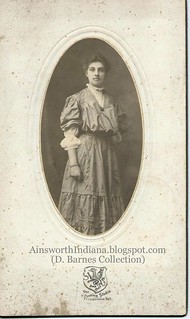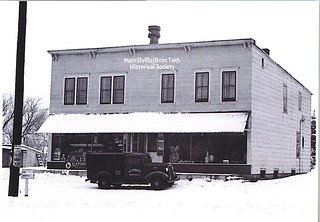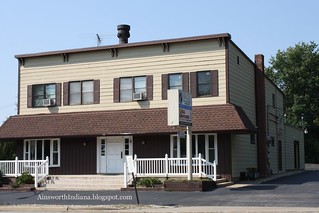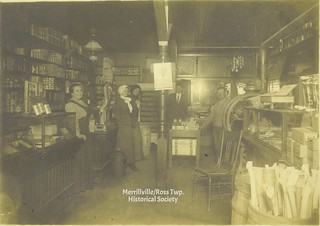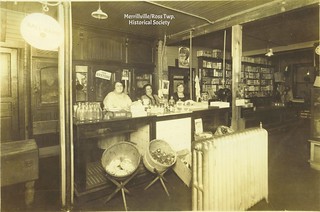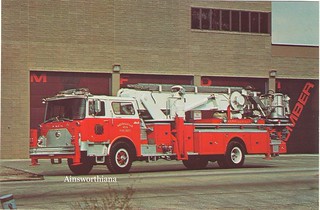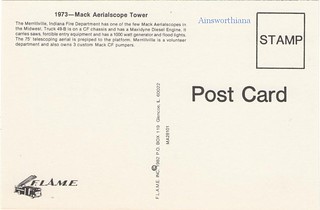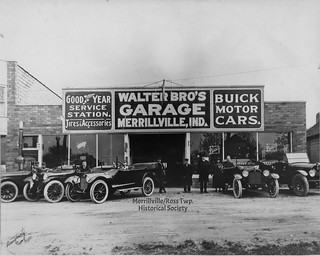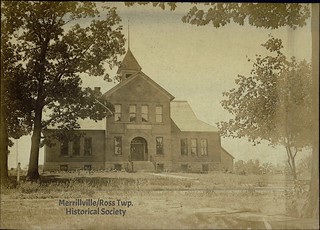

(Click on images to enlarge)
Historical images in this post courtesy of the Merrillville/Ross Township Historical Society.
The first image dates to circa 1902. Here's another view from the same general time, from a postcard postmarked 1908:
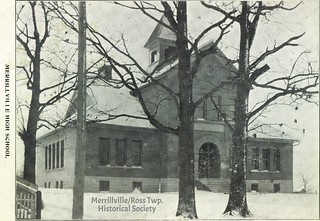
What's surprising to me is how little we know about this building — for example, when the present structure was built. The very first brick schoolhouse went up here, or near here, in 1865:
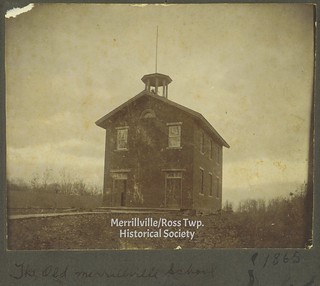
Jan Clemens, in A Pictorial History of Merrillville, says this original schoolhouse was on the same site as the present building. Among members of the Merrillville/Ross Township Historical Society who have an opinion, the belief seems to be that the 1865 school was just slightly to the south.
We don't know when (if) the 1865 school was demolished and the present one built — or was the original one heavily remodeled, maybe? Jan Clemens states: "The brick building that housed the Merrillville Primary School was also used for town meetings, church school, and church services. In 1896, it became the nucleus of the town's first high school and more rooms, some gables, and a bell were added," which sounds as if it were the 1865 building being remodeled to look like the circa-1902 images.
A plaque in the museum suggests that the full second floor was added in 1917.
I believe the last year this building served as a school was 1970. Then it became the Merrillville town hall. After the town government moved to the Merrillville Town Complex at 7820 Broadway, it offered the old school building to the Merrillville/Ross Township Historical Society (formed in 1967), which opened its museum in 1995.

